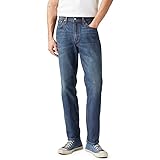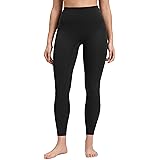The beauty and resilience of Planet Earth are truly unparalleled, as beautifully depicted in the accompanying video. Its breathtaking landscapes and vibrant ecosystems, home to over 8 million species, serve not only to sustain us but also to inspire human creativity, particularly within the dynamic world of fashion. However, this profound connection between nature and our aesthetic pursuits is currently being strained by a pervasive global issue: the relentless rise of fast fashion. This industry’s increasing demands are suffocating our planet, leading to widespread pollution and jeopardizing the very sources of our inspiration and survival.
The global apparel industry is often cited as one of the world’s most significant polluters, a sobering fact that underscores the urgency of this environmental crisis. The pursuit of rapidly changing trends and inexpensive clothing items has pushed production cycles to an unsustainable pace, with detrimental consequences across ecosystems. Forests are cleared for raw materials, waterways are contaminated by chemical dyes, and the air is polluted by manufacturing emissions, all contributing to a substantial carbon footprint. This relentless drive for newness is profoundly impacting species diversity, pushing countless plants and animals closer to the brink of extinction as their natural habitats are destroyed.
Understanding the Environmental Impact of Fast Fashion
Each year, an astounding number of garments are produced worldwide, estimated to be over a hundred billion items of clothing. These pieces are often manufactured using thousands of different chemicals, which include dyes, bleaches, and various finishing agents that can be highly toxic. These substances frequently find their way into our rivers and oceans, contaminating essential freshwater sources and harming marine life. The production processes also consume vast amounts of water, especially for crops like conventional cotton, exacerbating water scarcity in many regions already struggling with limited resources.
The problem is compounded by the shockingly short lifespan of these garments; a staggering three out of five items produced annually are estimated to end up in landfills within just 12 months. This represents an enormous volume of textile waste, contributing significantly to landfill overflow and the emission of greenhouse gases as materials decompose. Many synthetic fibers, such as polyester, are essentially plastic and can take hundreds of years to break down, releasing microplastics into the environment in the process. The current linear model of “take, make, dispose” is clearly unsustainable and requires an urgent re-evaluation across the entire supply chain.
The Call for a Sustainable Fashion Industry
Despite the grim realities, there is indeed a powerful beacon of hope, rooted in nature’s remarkable capacity for regeneration. This inherent power of renewal suggests that humanity can shift its approach, mirroring these natural cycles within the fashion industry itself. The choice, ultimately, resides with consumers every time a purchase is made, as well as with designers and manufacturers who can champion more responsible practices. By consciously investing in an item of clothing, individuals are empowered to make a statement, supporting a future where fashion harmonizes with the planet.
Embracing **sustainable fashion** means adopting a more thoughtful approach, considering every purchase and truly loving the choices made. This paradigm shift involves prioritizing quality over quantity, actively consuming less, and understanding the true cost of our clothing beyond the price tag. It calls for a deeper appreciation for durability, craftsmanship, and timeless design, moving away from disposable trends. Imagine if every garment purchased was chosen for its longevity and ethical production, creating a wardrobe built on intention rather than impulse.
Embracing Ethical and Eco-Friendly Clothing Choices
A fundamental component of the **sustainable fashion** movement is the principle of extending the life cycle of clothing items. This can be achieved through various actions, such as recycling textiles that can no longer be worn or repurposing old garments into new, innovative creations. For instance, a worn-out denim jacket might be transformed into a stylish tote bag, or an old t-shirt can become cleaning rags, preventing it from reaching a landfill prematurely. These practices not only reduce waste but also foster creativity and resourcefulness within the community.
Beyond individual actions, the industry itself is witnessing a transformative push towards more ethical fashion practices and innovative materials. Designers are exploring eco-friendly clothing options such as organic cotton, hemp, linen, and recycled polyester, which significantly reduce environmental impact. Additionally, advancements in dyeing techniques are minimizing water usage and chemical pollution, offering a glimpse into a future where fashion is inherently circular. The vision for a clean, considered, and **sustainable fashion** landscape is gaining momentum, challenging traditional manufacturing models and fostering a new era of responsible consumption.
This movement encourages consumers to engage more deeply with their clothing, perhaps learning to mend a torn seam or customize an existing piece, thereby extending its usable life. Such actions foster a stronger emotional connection to garments, reducing the impulse to discard them quickly. Furthermore, supporting brands that demonstrate transparency in their supply chains and uphold fair labor practices is a crucial aspect of ethical consumption. The collective power of conscious consumerism can compel the industry to adopt more environmentally sound and socially responsible production methods.











